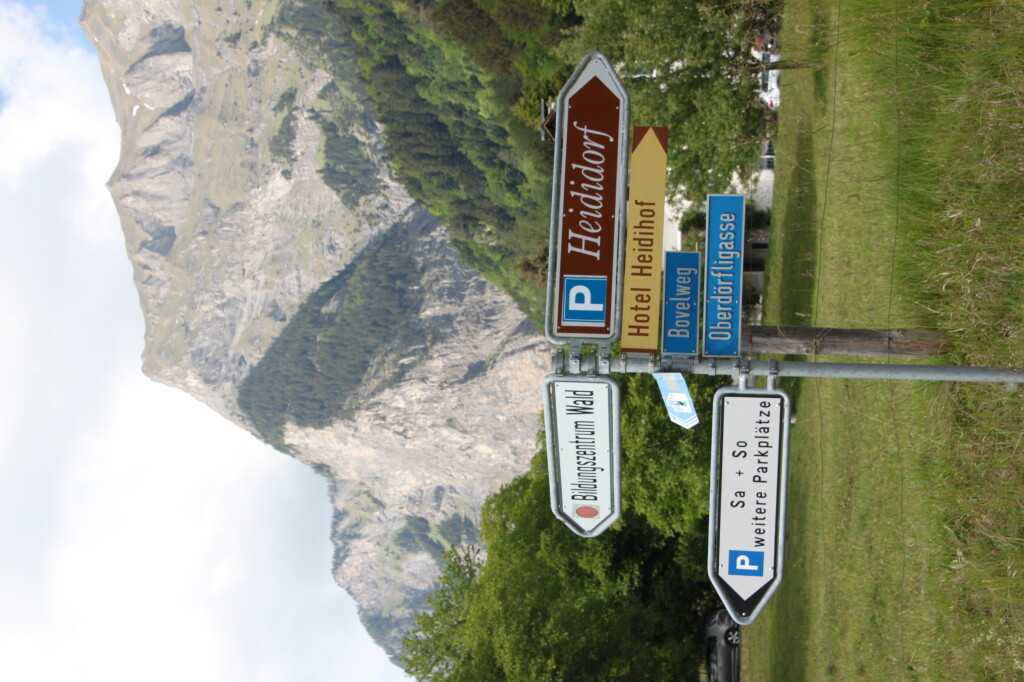By Nathalie Taylor
“Breathtaking!” my mother said with emotion, as our motorcoach rounded a curve and the Swiss Alps came into view. “I never thought I would see the Alps.”
Mother and I were enjoying a wonderful holiday in Zürich when we took the remarkable day tour from Zürich, Switzerland to Vaduz, Liechtenstein. It was impossible to tell when we left Switzerland and entered Liechtenstein because there were no signs or border entry points. We traveled through lush valleys framed by the massive Alps. It was spring, and the earth’s colors were exuberant and varied.
The beauty that I experienced on this tour dazzled the senses – the majestic Alps towered over valleys carpeted with wispy green grass and rainbows of flowers. The collective scent of spring flowers and unnamed grasses was intoxicating.
Our coach ambled lazily on the narrow road, which followed Zürichsee (Lake Zürich) to the town of Rapperswil on the southeast end of the lake. We stopped for a walking tour and lunch in an area called Altstadt, or in English, Old Town. Imposing buildings, with muted pastel exteriors, were designed in varied medieval architectural styles.
Mother and I walked the cobblestone streets to Rosenstadter, an engaging cafe in the Fischmarktplatz area of Altstadt. No scent of fish remained, only the fresh scent of lake water and tempting aromas drifting from the cafes.
At our outdoor table we enjoyed the Gorgonzola and Parma Ham Tarte. The pastry base was pizza-shaped, and a bit flaky. We reveled in the mix of flavors, savoring the salty rich taste of gorgonzola and the delicate savory sweetness of Parma ham. As aromatic as our tarte was, I couldn’t help but think what enticing scents emanated while it was bubbling in the oven.
We discovered it was a tradition to wash hands in the fish market fountain, so after lunch we participated, placing our hands in a stream of water that spurted from a lion head spout. The fountain was completed in 1845, so I couldn’t begin to imagine how many have participated in this cleansing ritual over the years.
Schloss Rapperswil, a castle built around 1200 AD, towers above Lake Zürich. This imposing structure, with stark grey walls and lofty, severe towers, was the last site we saw in Rapperswill.
Entering the domain of the Alps was like wandering into a storybook world. Fortunately, the road to Liechtenstein was narrow, so, at our slow pace, we were able to appreciate the timber chalets with their gabled roofs, decorative carvings, and planter boxes with cascading flowers. The road snaked and curved – up hills to enchanting hamlets – then down to valleys where sheep grazed on green hills in the muted sunlight.
The shapes of the snow-laden mountains varied considerably. Some had summits with rounded domes. Others were sheer and well-defined, with grey jagged peaks and barren rock walls. Rivulets of snow trailed down the mountainsides like silk ribbons.
As we crossed the Rhine River, vineyards came into view – rows and rows of hearty grapevines. At this point, our coach driver allowed us to view the Alte Rheinbrücke (Old Rhine Bridge), a wooden structure that spans the river. Built in 1901, the bridge connects Switzerland and Lichtenstein, and is closed to motor traffic.
Liechtenstein is ruled by Prince Hans-Adam II who resides in Schloss Vaduz, a stunning castle perched on a hillside in the shadow of the snow-laden Alps. A portion of the castle dates back to the twelfth century, and the tower walls are thirteen feet thick. We appreciated the castle’s mountainous glory from afar, as it was not open to the public.
In the town of Vaduz we were given time to shop and explore on foot. We marveled at the Cathedral of St. Florin’s lovely neo-Gothic exterior, but didn’t have time to wander inside.
The main tourist area of Vaduz is where we found the post office/shop that stamped our passports. Not all countries stamp passports now, so it was exciting to get the Lichtenstein stamp.
Cows in Lichtenstein are famous for their bells, so I was thrilled to find a souvenir cowbell. It was so colorful and kitschy, with a painting of the castle on the bell, and rainbow hues on the fringed strap, that I just had to hand over some of my Swiss francs. I also discovered some exquisite embroidered items, adorned with edelweiss and other native flowers. More francs spent.
As our coach left Vaduz, we traveled through a pastoral region of eastern Switzerland known as Heidiland. We could understand why the stunning countryside had provided inspiration for Johanna Spyri as she wrote the classic story, Heidi.
After the coach stopped, mother and I explored the countryside alone, while others walked in the opposite direction. We ambled along crooked pathways lined with flowers and tall grasses. Clusters of dogwood blossoms and a variety of mountain blooms punctuated the green valleys, blending in colorful harmony. A slight breath of wind carried an earthy scent from the meadows.
Our last coach stop was an inspiring vantage point overlooking the placid turquoise waters of Lake Walenstadt where the Churfirsten mountains rose sharply above the water’s edge.
As our coach moved farther and farther from the Alps, and raindrops began to cling to my window, I felt a pang of regret. My alpine journey was over much too soon. But, the glorious countryside, alive with craggy mountains, vibrant wildflowers, and tranquil lakes, left me forever transformed.

